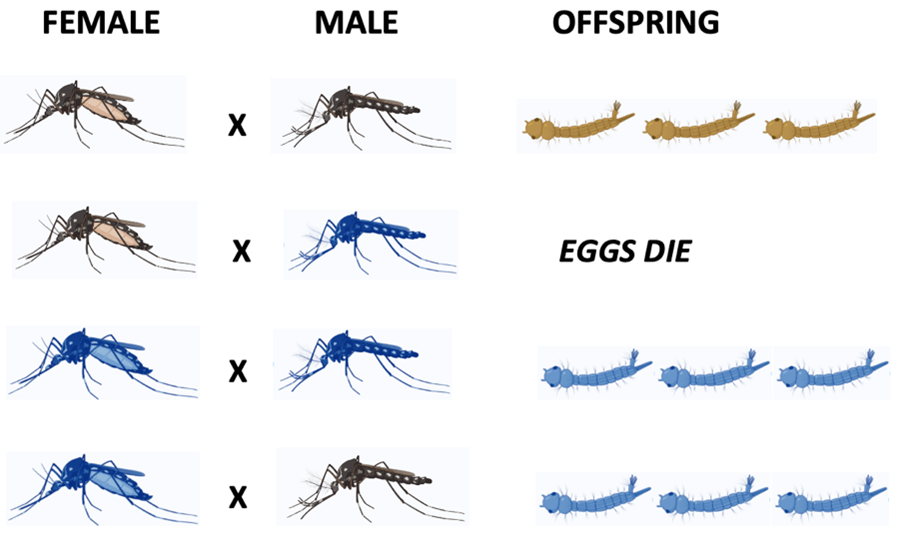WolBloc: working towards sustainable dengue control
Dengue fever is a tropical and subtropical disease found in over 120 countries, with hundreds of thousands infected every year causing tens of thousands of deaths. The four closely related dengue viruses are transmitted by mosquitoes, with the most important mosquito vector species worldwide being Aedes aegypti.
Wolbachia are bacteria found inside the cells of insects. They are not infectious between insect hosts, but instead are transmitted from female to offspring, or maternally inherited. They are able to invade populations by manipulating host reproduction, imposing sterility to give an advantage to females that harbour Wolbachia.
Crucially, some strains of Wolbachia are also able to block the transmission of viruses such including dengue, Zika and chikungunya. For example, Wolbachia strain wAlbB-S has been transferred in the lab from its natural host, the mosquito Aedes albopictus, into Aedes aegypti where it reaches high densities and blocks dengue, Zika and chikungunya transmission very effectively. Unlike some other Wolbachia strains, this virus-blocking capacity is maintained even at high temperatures.
Wolbachia wAlbB-S has been introduced into Aedes aegypti populations in various locations in Malaysia using weekly mosquito releases, and has brought dengue under control very effectively. Crucially, once introduced it remains at high population frequency by itself and provides efficient long-term control.
WolBloc is funded for £5m across 5 years by a Wellcome Trust award. The WolBloc project consists of 7 partners located in the UK, South East Asia, South America, Africa and Australia with expertise ranging from mosquito biology and virus transmission blocking to the economics of disease control. The WolBloc partners are examining ways to optimize the efficiency and cost-effectiveness of wider roll-out of the Wolbachia biocontrol approach.

Cytoplasmic incompatibility gives an advantage to Wolbachia-carrying mosquitoes, shown in blue.

